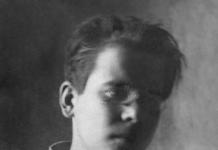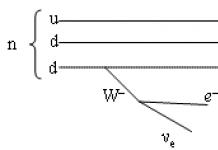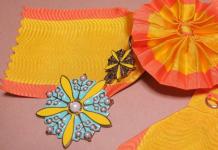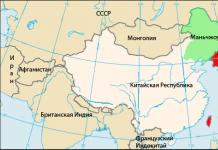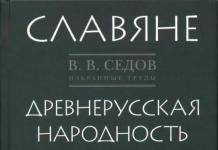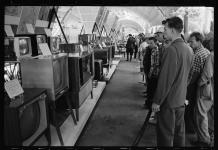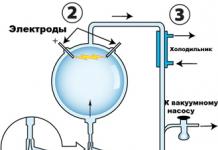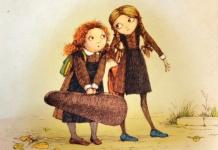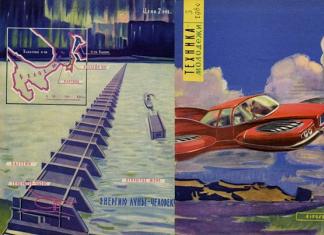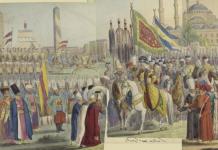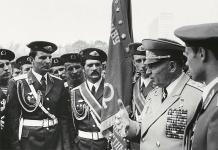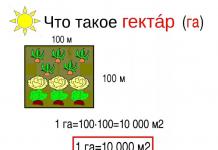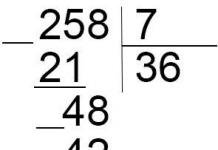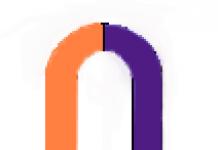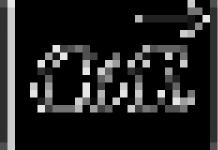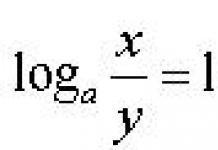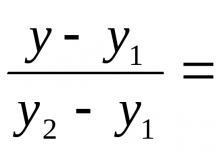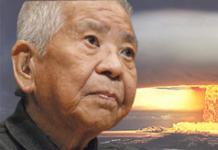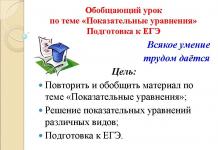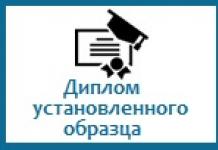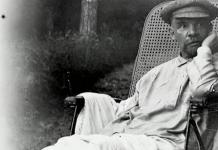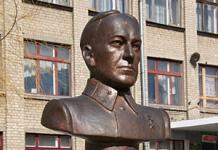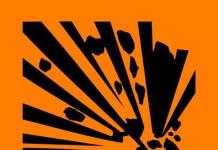Psychology and pedagogy
Individual route for accompanying a child with CRD
An individual developmental route for a child with DPD is a specially created comfortable learning environment to eliminate the shortcomings of his development, professional support of all preschool and school specialists, help from parents in difficult steps to master knowledge and accepted norms of behavior. The route of accompanying a child with DPD in a preschool educational institution and school outlines the goals and tasks that are most available at the moment for the pupil, and determines the steps for their implementation.Deficiencies and resources of a child with CRD
Delayed mental development is considered a slow pace of development of the psyche of a child. The causes of cerebrovascular accidents lie in neurodynamic insufficiency, constitutional features, chronic somatic diseases, and family problems. The consequence is the following developmental deficits:
immaturity of the central nervous system: weakness of the processes of inhibition and excitation, lag in the formation of inter-analytic communication systems;
exhaustion of mental functions;
lag in the development of psychomotor functions;
low intellectual productivity;
insufficient volume, generalization, objectivity and integrity of perception;
low strength of memorization;
inability to use additional means of memorization;
emotional instability;
low level of arbitrariness of cognitive processes and behavior;
underdeveloped speech: delayed formation, limited vocabulary, agrammatism, difficulty in building coherent statements, difficulty understanding the meaning of words;
inertia of mental activity;
long period of receiving and processing information;
violation of spatial orientation;
the desire to avoid difficulties;
lack of self-control.
Along with the listed disadvantages, these children have a good base of internal resources, which can be realized by the individual developmental path of a child with CRD:
- the ability to use the assistance provided;
the ability to meaningfully perceive the plot of a literary work heard;
the ability to understand the condition of a simple problem;
the ability to group objects and establish causal patterns;
the ability to understand the training material and complete the task, guided by its model and purpose;
activity in search of tools to facilitate the completion of tasks;
interest in reading books and the ability to logically and scrupulously retell what you read;
the ability to show deep emotions about what you read;
interest in theatrical and visual arts;
striving for creative self-expression;
love of fantasies and their displacement of unpleasant life situations.
Individual correctional and developmental route for a child with DPD
All specialists who enrolled in a preschool educational institution with DPD are comprehensively studied by all specialists, and then an "Individual card for supporting development and learning" is drawn up. For this, "Diagnostic cards of the individual development of the child" are used.
Based on the data of the maps, the preschool educational institution staff draws up an "Individual correctional developmental route" for the pupil for the entire period of his stay in kindergarten... The purpose of the individual route of a preschool child with CRA is to ensure the continuity of preschool and primary general education, developing in the pupil a functional basis for the formation of universal educational actions
The individual developmental route of a child with CRD determines:
1. Strategic development goal: to lay the foundations of knowledge about the world around us, to form speech, to give the simplest basic ideas about mathematics, to comprehensively develop mental processes.
2. Principles of passing the route. The most important ones
● the principle of an integrated approach to the diagnosis and correction of violations.
It is based on the interrelated actions of all preschool education specialists and parents. The psychologist forms in the child the skills of analysis and synthesis, comparison and classification, the speech therapist uses them in the formulation of speech, the teacher and parents reinforce them in "social" situations.
● the principle of correctional and compensatory orientation of education
All actions of teachers prevent and correct violations using intact analyzers, functions and systems of the body, using modern special TCO, ICT, a special organization of training.
Each preschooler's specialist prepares his own “Individual correctional route for a preschooler with a preschool program”. Let's get to know him on the example of the work of a speech therapist.
Individual speech therapy route for a preschooler with ZPR
An individual route for a child with mental retardation in a preschool educational institution for the development of speech sets a goal: to improve his speech abilities, taking into account all the specific features. Let us consider the section of the speech therapy route "Connected speech (monologue and dialogical speech)" for a child with CRA of the older group (5-6 years old).
| Tasks | Methods | The content of the work |
| Develop dialogical speech | Free conversation about yourself, family, friends, games |
Ask the child to draw something that he likes to draw and then answer the questions about the drawing: "What did you draw?" "Why did you draw this?" "How would you name your drawing?" |
| Form speech initiative and independence | Game "Zoological Museum" |
Invite the child to independently consider pictures with animals, independently invent and ask cognitive questions; then answer the questions of an adult, how could he help animals |
| Form the ability to speak on behalf of another character | "Game dialogue" | Ask the child to independently invent a dialogue between animate and inanimate objects |
| Form the ability to conduct a dialogue and comply with accepted norms of behavior | Game "Telephone conversation" | Voice the child a list of telephone conversation etiquette rules and ask the two toys to voice their telephone conversation on behalf of the two toys |
Individual educational route for a child with preschool education at a preschool educational institution
Using the strategic “Individual route of development of a preschooler with DPD”, preschool teachers annually draw up a detailed educational program for a child, or “Individual educational route for a child with DPD”. His tactical steps correspond to the recommendations of the Federal State Educational Standard of preschool education for children of early and preschool education with preschool education and include:
● social and communicative development
● cognitive development
● speech development
● artistic and aesthetic development
● physical development
● sensory development
● knowledge of the surrounding world.
Preschool educators determine the tasks and content of work with a child on the "Individual educational route" in accordance with the AOOP DO for children of early and pre school age with ZPR
Consider the section "Physical development", the direction "Correction and development of psychomotor functions" for a pupil with mental retardation in the middle group
| Tasks | Method | Content |
| To develop fine motor skills | Pencil Rolling Exercise | Child rolls round pencils and pencils with edges in hand |
|
Icicle game. Self-control of muscles based on contrast sensations. |
Ask the child to imagine that he is holding a cold icicle in his hands in winter: - muscles are tense; ask the child to imagine that he is holding an icicle in his hands in the spring - the muscles are relaxed. | |
| Optimize speech motor skills |
Various types of hand massage. Self-massage of hands using massage balls. |
Ask the child to imagine that he is holding a thread. |
|
Breathing exercise "Stretching the string". |
Pronounce vowels and consonants in turn. Ask the child to repeat them with a condition. He spreads his arms to a vowel sound and stretches the "thread", to a consonant sound he brings his hands together and squeezes the "thread". | |
| Restore the vestibular-motor apparatus | Jumping exercises |
Ask the child to perform a group of jumps 5 times: jump back - squeeze the fingers, jump forward - unclench the fingers. Ask the child to perform 3 jumps while moving forward on one leg and clapping hands. |
Individual itinerary for a child with DPD at school
Graduates of preschool educational institutions who are diagnosed with CRD undergo PMC before entering school. When violations are confirmed, inclusive schools organize special comprehensive support, the purpose of which is to compensate for the deficits in the development of the cognitive sphere, correct personality specific features, teach independent activity, controlling this process, and establish close cooperation with the child's family. In the support system, an important place is given to the work of a school psychologist. He works with a pupil of the CRA on the “Individual route of psychological correction”. The goal of the route is, first of all, to provide the child with adaptability, to teach him to consciously maintain balance in relations with himself and the new school environment on his own, and then, by regulating the processes of activity and inhibition in the brain, to develop the arbitrariness of behavior and awareness of each educational step of his ward.
Individual educational route of a schoolchild with CRA
The individual educational route of a schoolchild with IDD is his own quest for knowledge, the “path of a hero” who overcomes many difficulties on his way, to a well-deserved reward, which in the future will be a certificate of maturity and the opportunity to get an interesting, demanded, highly paid profession. The school council, taking into account the proposals of the PMPK and the requests of the child's family, on the basis of FOGS and AOOP NOE 7.1 or 7.2, develop an individual educational route for children with mental retardation, taking into account all special educational needs. These needs are met by basic textbooks for healthy schoolchildren and special applications, illustrative visual didactic materials, workbooks, both printed and electronic, for the option of training for 4 years under the program 7.1.
The route of a child with CRA according to 5-year education programs 7.2. requires the addition of special electronic software applications to the basic textbooks
Example. Individual educational route 1 class, ZPR
I Organizational component
1. Explanatory note with information on the RFP for the FOGS.
2. List of used normative documents.
3. The purpose of the "Individual educational route". The educational route of a child with mental retardation in the 1st grade should ensure the progress of the student in mastering school subjects and develop the ability to learn not only under the direct and direct guidance and supervision of a teacher, but also with a certain degree of independence in interaction with the teacher and classmates.
4. The goals of the teacher.
● Provide the child with the development of the adapted basic educational program of primary general education, correcting the shortcomings of his physical and mental development
● Timely identify difficulties in passing the educational route and edit it flexibly.
5. The tasks that an individual route for a child with DPD sets for the teacher are set out in "AOOP NOE for DPD" option 7.1
The most important ones are:
● Create a pace of educational work that matches the student's capabilities and the speed of the formation of generalized knowledge
● Create a protective pedagogical regime
● Use health-saving technologies
● Develop general intellectual skills
● To form the foundations of social competences and the ability to use them purposefully and consciously
● Encourage and stimulate the child's work using only qualitative assessment
6. Psychological and pedagogical characteristics for a student of the 1st grade. The diagnosis, the main problems of learning and the level of knowledge in the main academic subjects are indicated.
II Weekly individual plan with the number of hours for each subject
Filled in in accordance with the selected type of AOOP LEO for the DPR. 7.1 or 7.2
III Educational component of the individual route
1. Explanatory note analyzing the correspondence of the selected program to the individual characteristics of the child
2. Planned results of mastering by a student of AOOP NOE ZPR, grade 1.
● Describe for each subject (AOOP NOOO DPR 7.1), for example, mathematics, the results by the end of the school year:
- what the child will learn
Call numbers from 1 to 20 and pronounce their sequence. Operate with the words "addition", "subtraction". Determine the bit composition of numbers from 11 to 20. Compare groups of objects, making pairs of them. Determine the length of the segment.
- what will learn:
Solve examples with 1-2 actions. Solve simple addition and subtraction problems in pedals of 20. Recognize geometric shapes. Work with a two-line mathematical table.
- a mechanism for determining the level of knowledge and skills:
Tests, control and verification work.
IV Relationship of basic educational activities with the content of academic subjects
"Mathematics".
Universal cognitive actions.
● Development of the skill of working with information: the ability, with the help of the teacher, to distinguish the new from the known; the ability to navigate the textbook.
● Development of research abilities: the ability to find answers to questions using the textbook, the knowledge gained in the lesson and your life experience; the ability to consciously interact with information, making their own conclusions about the work of the class
● Development of the ability to classify and generalize: the ability to compare and group numbers, numerical expressions, equality and inequality, flat geometric shapes.
Starting to pass his individual route to the preschool educational institution and continuing the educational "journey" at school, a child with DPD has every chance of successfully mastering the AOOP LEO option. And then the first achievement of a "special" schoolchild may be the decision of the PMC to consider him a healthy child who does not need special educational conditions.
Leontyeva Valia Yurievna
MKDOU kindergarten "Ryabinka" Irkutsk region, Taishet
Educator.
Individual development route
DOWNLOAD (with complete table)
The beginning of the year.
Pupil __XXXXXXXXX ______________
Group _ average No. 2____________________
Age 4 ________________
Difficulties by educational area:
"Cognitive development"
There is a need to expand understanding of the rules of conduct in public places. He is poorly familiar with cultural phenomena (theater, circus, zoo, opening day), their attributes, people working in them, rules of behavior. Doesn't know fruits, vegetables, berries, mushrooms. Does not recognize and does not name 3-4 types of trees.
Has a poor understanding of the conditions necessary for the life of people, animals, plants (air, water, food, etc.).
Does not distinguish from which parts a group of objects is made up, to name their characteristic features (color, size, purpose). Can't count to 5 (quantitative counting), can't answer the question "How much is there?" Has difficulty comparing the number of items in groups on the basis of counting, as well as by piecewise correlation of items of two groups; in determining which objects are more, less, equal quantity. Cannot compare two objects in size based on their application to each other or overlapping (more-less, higher-lower, longer-shorter. Does not determine the position of objects in space in relation to itself (top-bottom, front-back).
"Speech development"
Does not understand antonymic words; cannot form new words by analogy with familiar words (sugar bowl - rusk); cannot highlight the first sound in a word; does not know how to talk about the content of the plot picture. Cannot repeat the descriptions of toys with the help of an adult. He cannot name his favorite fairy tale, read his favorite poem. Has difficulty answering the questions: "Did you like the work?", "Who did you like. Why?"
Not familiar with the professions of an artist, painter, composer. Difficulties in naming objects and phenomena of nature, surrounding reality in artistic images (literature, music, fine arts).
Does not know works of folk art (nursery rhymes, fairy tales, riddles, songs, round dances, chants, folk arts and crafts). Knows very little about books, book illustrations.
Does not distinguish between building parts (cube, plate, brick, bar).
Cannot depict objects by means of distinct shapes, selection of colors, accurately painting over using different materials. Doesn't know Dymkovo and Filimonov toys; does not know how to decorate silhouettes of toys with elements of Dymkovo and Filimonov painting.
Does not hold scissors correctly and does not know how to cut them in a straight line, diagonally; cut a circle from a square, an oval from a rectangle, smoothly cut and round the corners.
|
Regime moments |
Individual work |
Interaction with parents |
Note |
|
|
Cognition 1. "What to whom" Didactic task: To teach to correlate the tools of labor with the profession of people; to foster interest in the work of adults, the desire to help them, to take on the roles of people of different professions in creative games. 2. "Name it in one word" Didactic task: Exercise children in classifying objects 3. "Where does he live?" Didactic task: Consolidate children's knowledge about the habitat of animals, fantastic heroes 4. "Good or bad" Didactic task: Teach children to highlight positive and negative sides in objects and objects of the world around them. 5. "Tree, shrub, flower" |
1. "Guess what kind of plant" Objectives: to teach to describe the subject and to recognize it by description, to develop memory, attention. 2. "What kind of bird is this?" Objectives: to clarify and expand ideas about the life of birds in the fall, to teach how to describe birds by their characteristic features; develop memory; foster a caring attitude towards birds. 3. "Guess, we will guess" Objectives: to consolidate knowledge about garden and vegetable garden plants; the ability to name their signs, describe and find them by description, develop attention. 4. "Tree, shrub, flower" Objectives: to consolidate the knowledge of plants, expand the horizons of children, develop speech, memory. 5. "Where does what grow?" Objectives: to teach to understand the processes occurring in nature; to give an idea of the purpose of plants; show the dependence of all life on earth on the state of the vegetation cover; develop speech. |
Give homework to parents on the "Math for Toddlers" printouts. Suggest material from the series "The Seven Dwarfs" |
||
|
1. "Wide - narrow" No. 1 Objective: to continue to form the wide-narrow view. 2. "Funny nesting dolls" №3 Purpose: to teach to distinguish and compare objects for different qualities of magnitude. 3. "Right as left" No. 4 Purpose: mastering the skills to navigate on a sheet of paper. 4. "Who will sooner roll the tape" No. 6 Purpose: to continue to form an attitude towards size as a significant feature, to pay attention to the length, to acquaint with the words "long", "short". 5. "Collect the berries" # 7 Purpose: to distinguish between equality and inequality of groups of objects by placing one object under another. Ability to compare objects of contrasting sizes. Development of memory, attention, logical thinking, creative imagination. |
1. "Take - do not take" Purpose: differentiation of forest and garden berries; increase in vocabulary on topic 2. "Berries"; develop auditory attention. 3. "One, two, three - look!" # 5 Purpose: to teach children to build an image of an object of a given size and use it in game actions. 4. "Let's decorate the rug" # 10 Purpose: to form the ability to group objects according to given criteria, to determine the number of objects 5. "Who has the longer tail?" No. 11 Purpose: Mastering the ability to compare objects of contrasting sizes in length and width, to use the concepts in speech: “long”, “longer”, “wide”, “narrow”. |
|||
|
Speech development 1. And mine is better. Purpose: to learn to form nouns using the diminutive-affectionate suffixes -chik-, -ik- and the increasing suffix -ische-. 2.Help. Purpose: to teach to select verbs for nouns; form compound words. 3. Family dinner. Purpose: to teach how to compose a series of synonymous words. Coordinate nouns with numerals; use adverbs and adjectives in speech. 4. Complete the sentence. Purpose: to teach how to form the plural of neuter nouns and use them correctly in speech. Purpose: to teach to give a qualitative assessment of the performed actions, answering the question "how". |
1.Accounts. Purpose: to teach to use prepositions in speech. 2. The best kindergarten! Purpose: to teach to select and use antonyms in independent speech. 3. Complete the sentences. Purpose: to teach to reconcile nouns with adjectives in the case. 4. Look and Tell. Purpose: to teach the use of prepositions of spatial meaning. 5. We are walking in the garden. Purpose: to teach to convey the content of the picture, guided by the example of an adult |
|||
|
Artistic and aesthetic development 1. Didactic game "Name it correctly" Purpose: To consolidate the knowledge of children about folk arts and crafts, their signs. The ability to find the right trade among others, to justify your choice, to compose a descriptive story. 2. Board game "Domino" Purpose: To consolidate children's knowledge of arts and crafts - a toy 3. "Green needles". Purpose: to consolidate the ability to quickly navigate on a sheet of paper, to draw symmetrical objects according to the model, to select the desired shade of a pencil. 4 reading and viewing books 5. Consideration of illustrations by female artists. |
1. Didactic game "Guess which painting?" Purpose: To strengthen the ability of children to recognize and name this or that painting 2. "The doll has a housewarming" Purpose: To consolidate the skills and abilities of working with building materials, to acquaint with the names of the figures. 3. "Trace the outline" Purpose: Acquaintance with the concepts of shape, color, size 4. "Different cars" Objective: To reinforce in children the idea of the color and name of building parts 5.Coloring |
|||
|
1.Application "Boat" 2.Application "Testicle simple and golden" 3.Cutting "Balls" 4. Carving "Favorite toy" |
1. Offer geometric shapes for cutting. 2. Offer toys templates for cutting. 3. Carving "Fruits and vegetables" |
Route results:
"Cognitive development"
Has an understanding of the rules of conduct in public places. I am familiar with cultural phenomena (theater, circus, zoo, opening day), their attributes, people working in them, rules of behavior. Knows fruits, vegetables, berries, mushrooms. Recognizes and does not name 3-4 types of trees.
Has an idea of the conditions necessary for the life of people, animals, plants (air, water, food, etc.).
Distinguishes from which parts a group of objects is made up, name their characteristic features (color, size, purpose). Can count up to 5 (quantitative), answer the question "How many?" Knows how to compare the number of objects in groups on the basis of counting, as well as by piecewise correlation of objects of two groups; in determining which objects are more, less, equal quantity. Knows how to compare two objects in size based on their application to each other or overlapping (more-less, higher-lower, longer-shorter. Determines the position of objects in space in relation to himself (top-bottom, front-back).
"Speech development"
Understands words-antonyms; knows how to form new words by analogy with familiar words (sugar bowl - rusk); knows how to highlight the first sound in a word; knows how to talk about the content of the plot picture. Can, with the help of an adult, repeat the descriptions of the toy. Can name your favorite fairy tale, read your favorite poem. Answers the questions: "Did you like the work?", "Who did you like. Why?"
"Artistic and aesthetic development"
Familiar with the professions of artist, artist, composer. Names objects and phenomena of nature, surrounding reality in artistic images (literature, music, fine arts).
Knows works of folk art (nursery rhymes, fairy tales, riddles, songs, round dances, chants, folk arts and crafts). Knows about the book, book illustration.
Distinguishes between building parts (cube, plate, brick, bar).
Can depict objects through distinct shapes, color matching, accurately painting over using different materials. Knows Dymkovo and Filimonov toys; does not know how to decorate silhouettes of toys with elements of Dymkovo and Filimonov painting.
Holds scissors correctly and knows how to cut them in a straight line, diagonally; cut a circle from a square, an oval from a rectangle, smoothly cut and round the corners.
Irina Sotskova
Development of an individual educational route for a preschooler
Dear colleagues, we have presented to your attention the material on compiling individual educational route for a preschooler.
In practice, the process of teaching and upbringing is mainly focused on average level development of the child, therefore not every pupil can fully realize their potential. This confronts educators, speech therapists, psychologists preschool educational institutions the task of creating optimal conditions for the realization of the potential of each pupil. One of the solutions in this situation is the compilation and implementation (hereinafter - IOM).
This is a personal way of realizing a child's personal potential. (pupil) v education and training.
The main purpose of compiling individual educational route(IOM):
This is the creation in kindergarten of conditions conducive to positive socialization. preschoolers, their social and personal development.
Tasks for social and personal development baby:
Create a favorable subject-development environment for the social development of the child;
To organize a unified system of work of the administration, pedagogical staff, medical personnel of preschool educational institutions and parents for the social and personal development of the child;
Improve the teacher's communication style with baby: to adhere to a psychologically correct style of communication, to achieve respect and trust of the pupil;
Create conditions for the development of a positive attitude of the child towards himself, other people, the world around him, the communicative and social competence of children;
Form a child's self-esteem, awareness of their rights and freedoms (the right to have their own opinion, choose friends, toys, activities, have personal belongings, use personal time at their own discretion)
Individual educational route is determined:
state order;
the needs and requests of parents;
individual functional capabilities and level of development of pupils;
the possibilities of the preschool educational institution;
Individual educational routes are being developed:
For children who do not master the basic general education program of preschool education;
For children with disabilities, children with disabilities.
For children with high intellectual development.
Individual educational route includes the main directions:
Development of general and fine motor skills;
Development of cultural-hygienic and communication-social skills;
The formation of the child's activity (manipulative, sensory-perceptual, subject-practical, playful, productive), which include modeling, applications, drawing) and other types of productive activities.
Development of speech (formation of the sensory basis of speech, sensorimotor mechanism, speech functions);
Formation of ideas about the environment (the objective world and social relations);
Formation of ideas about space, time
Methods used in work:
Conversations, games, classes, reading fiction, sketches aimed at getting to know various emotions and feelings, with "Magic" means of understanding;
Games, exercises and trainings that contribute to the development of emotional, personal and behavioral spheres (development of communication skills and improving relationships with others, relieving fears and increasing self-confidence, reducing aggression and weakening negative emotions)
Classes, games and exercises for the development of mental processes, (memory, attention, perception, thinking, imaginations) ;
Art therapy techniques (puppet therapy, isotherapy, fairy tale therapy);
Relaxation psycho-gymnastic exercises (relaxation of the muscles of the face, neck, torso, arms, legs, etc.)
At development of an individual route we rely on the following principles:
The principle of reliance on the child's learning ability,
The principle of correlating the level of current development and the zone of proximal development.
The principle of respecting the interests of the child. In another way, he is called "on the side of the child." Those educators should be objective about the child and his problems! Always be on the side of the child!
The principle of close interaction and consistency of the work of the "team" of specialists in the course of studying the level of development of the child (phenomena, situations);
The principle of continuity, when the child is guaranteed continuous support at all stages of assistance in solving the problem.
The principle of refusal from averaged rationing. The implementation of this principle presupposes the avoidance of a direct evaluative approach in the diagnostic examination of the child's developmental level.
The principle of reliance on children's subculture. Each child, enriching himself with the traditions, norms and methods developed by the children's community, has a full-fledged children's experience.
Based on the analysis of the literature studied by us, several stages of design were identified. individual educational route
1. Stage of observation.
2. Diagnostic stage.
3. Design stage.
4. Stage of implementation
5. Stage of final diagnostics.
Let's dwell in more detail at each stage
The first stage of observation.
Stage goal: identify group preschoolers experiencing difficulties: personal, regulatory, cognitive, communicative, psychomotor or complex. Based on the observation results, the table is filled "Identification of groups preschoolers by difficulties»
Diagnostic stage. At this stage, a number of diagnostics are carried out together with a teacher-psychologist. The purpose of this stage is to identify the causes of the child's difficulties. Based on the observation results, the table is filled "Identified difficulties preschoolers and their reasons»
PI Difficulties identified Causes Result (at the end of the escort)
3. Design stage. Target stage: build individual educational routes for preschoolers, on the basis of the identified difficulties and the established causes of these difficulties.
4. Stage of implementation individual educational routes in the process of life preschoolers.
Individual educational route can be realized in all types of activities, at any time, it all depends on the child's desire, on his choice, self-determination.! Considering that the leading activity of the child preschooler- a game for the teacher in implementation individual routes pedagogical reception helps "mailbox", in which children find a letter addressed to a specific child with a legend for the task.
At the 5th stage, the final diagnostics is carried out.
Stage goal: identify the results of an action route(the difficulty persisted or did not persist.
The intended result:
Development of social competence;
Development of communication skills;
Correction of anxiety, self-esteem (approximation to adequate);
Development of a sense of self-worth;
Correction of the child's social and personal problems.
So way, thanks to lining up individual educational trajectories of children's development, we provide our pupils with equal starting opportunities when entering school.
The intended goal of the school educational process - the development of a full-fledged, comprehensively educated and harmonious personality - is realized through the introduction and fulfillment of the requirements of the Federal State Educational Standard. One of the important aspects of achieving this goal is the development of a student (hereinafter - IOM) and adherence to its provisions.
Changes in the general education system in recent years are focused on the personalization of ongoing activities, which include the self-development of both students and teachers. In this regard, the curricula are being revised, directing them towards the humanization and personalization of students. Such a movement ensures the formation of personality, self-determination and recognition of the self-worth of each student, and aims to increase the efficiency and functionality of the programs being implemented. In turn, the individual educational route provides for:
- organization of the educational process at a pace and order corresponding to the level of the optimal study load for each child;
- setting goals and learning objectives that meet the real requirements and expectations of the student, which increases the motivation to master the program material;
- modeling the situation of personal responsibility for the result.
An individual educational route - what is it?
In recent years, the school educational system has undergone significant changes, as a result of which the very essence of pedagogical practice has changed. If earlier teachers were required to have excellent knowledge of the subject and its competent presentation, then in the context of the humanization of the modern school, the ability of teachers, within the framework of lesson classes and extracurricular activities, to contribute to the formation of every child as a person, regardless of age, health indicators, individual abilities, is highlighted. To ensure the differentiation of the educational process, the concept of IOM was introduced into the theory of pedagogical practice, which has not yet found its reflection at the legislative level, and therefore has several interpretations.
Save this to yourself so you don't lose:
Read in the "Directory of the Deputy Head of an Educational Institution" magazine the recommendations for individualizing schooling:
- Designing an individual educational route in the lesson (technological maps and lesson models)- Sample work plan and individual itinerary to help develop students' abilities (diagnostic methods)
A conceptually personal way of realizing a student's personal potential in education. A number of authors define the concept of an individual educational route for a student as a program developed by a student together with a teacher, where the child is given some freedom to choose the form and content of education. Other authors are of the opinion that the route is a kind of model of the learning space, which is made taking into account the characteristics of the child. In any case, the goals of the student's personal plan are set taking into account the requirements of the Federal State Educational Standard for the comprehensive development of the individual within the framework of the school curriculum.
To meet the needs of students, including through the individualization of training, it is necessary to create special conditions, which is preceded by the following stages of organizational work:
- Study of the abilities, interests, intellectual capabilities of students. Data on the basis of which the design will be carried out an individual educational route following the example, can be obtained in the course of diagnosis, assessment and control of knowledge, observation, compilation of statistical tables with forecasting the zone of proximal development. Each teacher within the framework of this stage has the right to use the diagnostic method that seems to be the most effective, taking into account the peculiarities of the educational situation. To obtain reliable data, it is recommended to implement a set of diagnostic measures.
- IOM selection. This point should be understood as the creation of special conditions, thanks to which students have the opportunity to choose ways, forms and methods of teaching.
It is important to note that the teaching of students can be carried out at once by several IOM, which are carried out in parallel or sequentially. The choice of each route depends on a number of factors - the interests and needs of the child, parental expectations, personnel and material and technical capabilities of the school, available ways to include an additional educational module in the learning process.
Summing up the above, I would like to present one more definition of the analyzed concept. So, an individual educational route is a differentiated, specially prepared program, in which the student is the subject of choice, and the teachers provide comprehensive assistance in his self-determination and successful self-realization.
The individualization of the learning process at school stimulates the introduction of special documents designed to provide a personal approach to each student. One of these documents - the student's individual educational route itself - is a ready-made program that guides the child's development along a specific route. The introduction of this document into the work of a general education institution is designed to help teachers see the process from the perspective of schoolchildren, and young people to determine the goals and direction of their further development.
The project is designed to form a stable position of the subject of choice in the child's mind with the help of teachers. The support of teachers in the implementation of the route will provide the student with an opportunity for self-determination. According to the normative guidelines, individual plans necessarily include six basic subjects (mathematics, history, Russian language and literature, physical education, foreign language and life safety). The rest of the disciplines can be chosen by the student, his parents or teacher, taking into account the plans and abilities of a particular student.
Studying the concept and examples of an individual educational route student, one should bear in mind the broader meaning of the program, which indicates an educational trajectory. This means that in order to achieve the goals, several directions and plans must be implemented simultaneously according to the technology of the pedagogical process prescribed in the same document. The program is necessary for the formation of a sequence of activities for the provision of knowledge, and includes not only mental development, but also the possibility of revealing the personal potential of each student.
One of the most important goals of routing learning is to create favorable conditions for the manifestation of giftedness and personality traits. It is necessary to understand that due to the peculiarities of health, low motivation, family circumstances and many other factors, not all schoolchildren find the introduced education system easy. For many children, the educational route can be a significant support in mastering the school curriculum. Samples of the student's individual educational route, proposed in the article, will give an idea of the document, its functions and features.
Individual educational route: principles and stages of creation
Designing personal routes for schoolchildren is carried out taking into account their psychological and intellectual characteristics. According to the modern concept of education, students can explore new topics, consolidate or repeat the material they have covered. Weak, strong, gifted or often ill students cannot move along the same trajectories, therefore, for each category of schoolchildren, different IOM are compiled, taking into account also the degree of learning of the children. Programs can be short or long, but in any case, they should stimulate the formation of a versatile personality, self-esteem, motivate to self-education and apply the knowledge gained in practice.
Choice individual educational route for a particular child should be done by a teacher taking into account the actual indicators of the educational situation. The following elements should be included in the route design:
- Generalized characteristics of the child, based on the results of complex diagnostics.
- List of formed knowledge and skills provided by the educational program.
- The area of knowledge and competencies provided for in the conditions of in-depth study of the subject area (relevant for children with signs of giftedness).
- A list of creative assignments for each educational topic of software development.
- Indicators of psychological and pedagogical monitoring.
- Necessary corrective measures (for schoolchildren with disabilities).
According to N. Poddkov, the design of IOM is recommended to be carried out not only taking into account the zone, but also the horizons of the nearest development, envisaging, paradoxically, movement towards difficult-to-achieve goals. This is to prevent artificial limiters. The maximum efficiency from the implementation of the program can be achieved if, at the stage of its development, the student is involved in the process together with the parents. Conducting joint activities (communication, reading, games, etc.) allows you to clarify the individual characteristics of the student and understand the expectations of parents from educational activities.
Experts also recommend developing an IOM for children with disabilities. Such documents should take into account the characteristics of the students and be aimed at improving corrective learning. Following a special route contributes to the effective socialization of children with disabilities.
In this way, individual educational routes according to the Federal State Educational Standard are designed to solve the following tasks:
- They allow you to create favorable conditions for general development, including through meeting the needs for self-and additional education.
- They provide conditions for the development of the main metasubject competence - the ability to study with the setting of goals and objectives, the organization of the educational process, the identification of difficulties and their overcoming.
- They help to restore the missing knowledge to lagging students.
- Contribute to the formation of motivation and learning activities in poorly performing children.
- They support gifted children with personality traits, expressed in hyperactivity, increased emotionality, and difficulties in communication.
- They help children with health problems to get education by developing an individual educational route for a student with disabilities.
- They provide an opportunity for students who are ahead of development to acquire knowledge that matches their abilities.
As for the design itself, it is not possible to develop a single trajectory for all students, since the learning process is in constant motion, and each student requires an individual approach. Therefore, it is necessary to understand that the elements of the route can and should be adjusted. At the same time, providing a wide range of opportunities and assistance in choosing your direction are the main tasks of the teacher. Despite the collective development of the route (including with the involvement of parents), the choice of direction should remain with the child.
We present to your attention the development algorithm individual educational route according to the sample, which can be implemented in stages in the context of modern educational practice:
- Determination of the grounds for choosing an individual educational route of a student (determination, through psychological and pedagogical diagnostics, of the level of achievement of subject, metasubject and personal results, educational needs, motivation for learning, health status, etc.).
- Conceptual substantiation of the choice of an individual educational route (at a joint meeting of a representative of the administration, teachers, students and their parents, educational goals are determined, educational results are planned to be achieved as a result of mastering IOM at various stages and in general, the main activities and possible problems).
- Designing by students and their parents of an individual educational route using an electronic constructor (clarification of individual educational goals and objectives, specification of planned results, choice of the level at which each subject will be studied, choice of extracurricular activities programs, social practices, elective courses, etc., the choice of the form of summing up the results of the development of the educational route).
- Designing by teachers and a psychologist of diagnostic techniques for the current and final diagnostics of the development of IOM, including self-assessment cards of students.
- Meeting-interview of a representative of the administration, class teacher, student and parents to clarify the structure and content of the individual educational route, planning joint work for its implementation.
- Development of a route sheet for the implementation of an individual educational route (in electronic form).
As practice shows, the implementation of IOM is possible only in special educational conditions that provide for the openness of learning outcomes, providing schoolchildren with the opportunity to choose the level of complexity of the program material, and a combination of forms of organizing educational work only on the basis of the principle of expediency. An individual educational route requires the provision of differential pedagogical assistance to each of the students, the construction of interaction in such a way that learning invariably remains an independent activity, as well as the provision of comfortable psychological conditions for all children without exception.
Get a standard diploma
To clarify what school performance is and what affects it, effectively identify the causes of school failure, learn to use technologies for working with unsuccessful students, with gifted and highly motivated children, learning according to the program

Individual educational route according to the Federal State Educational Standard
A distinctive feature of IOM, which in fact personify new teaching technologies with maximum indicators of differentiation and individualization, is the multidimensionality of work in the direction. This is manifested in a wide choice of directions for the implementation of routes: content (variable curricula and educational programs that determine an individual educational route), activity (special pedagogical technologies) and procedural (organization itself). At the same time, the most important components individual educational routes are the following components:
- The target aspect determines the exact goals, which are formed taking into account the requirements of the Federal State Educational Standard, the needs and motivation of the student.
- The content component provides a rationale for the constructed route, explains the systematization of the content of subjects and the relationship between cycles, subjects, topics in the curriculum.
- The technological element establishes methodologies, educational technologies and special methods for the implementation of the planned educational and training activities.
- The diagnostic component defines the system chosen to control the level of knowledge gained.
- The organizational and pedagogical aspect expresses the paths that, as a result, will lead to the achievement of the goal.
- The result item indicates the planned results.
An explanatory note to the student's individual educational route is a document that provides a full description of the compiled development trajectory. The document includes points about the features of development, the student's capabilities, planned results, performance criteria, features of the educational process and ways to control its functioning. In the IOM itself, the teacher usually offers a set of tasks of varying degrees of difficulty and topics for research or creative works... I would like to note that the very fact of developing a project route as a factor in the individualization of learning is significant, but not particularly effective if the school does not have special organizational and pedagogical conditions, namely:
- The need to comply with the basic principles that ensure the effective use of the individual educational routes of the teacher to achieve the planned educational results (mandatory observance of the student's interests, the student's personal active position, interaction and consistency of actions of all participants in educational relations, continuous and guaranteed psychological and pedagogical support for the implementation of IOM, support to achieve the planned educational results of students).
- Various types of design are systematically carried out individual educational routes according to the Federal State Educational Standard or their combination (for students experiencing difficulties in mastering educational programs in academic subjects, children with disabilities, gifted schoolchildren).
- The local documentation provides for the possibility of making changes to the organization of the educational process, allowing students, within the framework of the design and implementation of IOM, to use as structural units compulsory units of program content, elective courses, supra-subject programs, participation in student scientific society, as well as distance educational and social practices.
- Provides didactic support for students in the implementation of an individual route based on continuous monitoring of educational achievements.
- At school, with the participation of the school administration, opportunities are created for teachers to actively use modern educational technologies and educational practices, including through the creation of a system of psychological and methodological support in the process of solving specific educational and professional difficulties of participants in educational relations.
- There is a continuous development of the educational space of the school, first of all, the information and educational environment, and social partnership both for the popularization of subject knowledge through the conduct of educational, educational and scientific-methodological events, and for the implementation of integrative educational practices.
Provided that the presented requirements for creating favorable conditions for the implementation of IOM are met, one can count on the consistent implementation and approval of a system of managerial and organizational-pedagogical conditions for the design and implementation of individual educational achievements of students, taking into account the need to implement subject concepts that can be adapted to the conditions of a particular educational institution. ... Accumulating ready examples of individual educational routes according to the Federal State Educational Standard, teachers will be able to work out simple algorithms for their design, contributing to an increase in the effectiveness of educational activities in general.
At the school level, IEM implementation practices ensure the implementation of a differential approach in educational activities, which fully corresponds to the current statehood of politics, creating conditions for the successful introduction and implementation of subject concepts, improving the quality of education and the effectiveness of educational institutions management, expanding productive social partnership, fulfilling a social order ...
For participants in the educational process, the organization of training on the basis of individual educational routes has additional advantages:
- For students: achieving planned educational results, ensuring positive dynamics of educational work, active involvement in the process of planning and evaluating their own educational activities, increasing motivation for schooling.
- For parents: providing opportunities for joint design of the child's IOM, enhancing cooperation with school representatives as part of the IOM, increasing satisfaction with the organization and the results of educational activities.
- For teachers: creating conditions for the introduction of new educational technologies and educational practices, increasing the analytical culture of the staff, ensuring the cooperation of all participants in educational relations necessary for solving educational problems, developing tools for diagnosing and assessing the achievement of the planned results of mastering IOM by students.
A ready-made individual educational route for younger students
According to research, from 20 to 60% of children by the time they enter school do not have a sufficient level of preparation for the upcoming education. This causes the problems of first graders associated with the difficulties of mastering the basic disciplines. Children studying in the lower grades are very different in their abilities, speed of learning, self-motivation and health conditions. That is why it is important to introduce differentiation in the organization of education from the first days of a student's stay at school.
Individual educational route a child of primary school age should be understood as a project of the child's educational activities developed by the teacher together with the parents, reflecting his individual characteristics, needs, interests, aimed at achieving key competencies of school age in order to facilitate the fullest realization of the child's development potential. The goal of IOM for a student of primary school age is to maximize the development potential, which includes:
- Compensation for the child's difficulties (difficulties associated with social adaptation and learning difficulties), full development.
- Preparing for a new social developmental situation.
- Development of abilities and capabilities, realization of creative potential.
- correctional type route - aimed at providing correctional and pedagogical support to younger schoolchildren with developmental disabilities (including disabilities);
- an adaptive route - aimed at using the potential of education to prepare a child for a new social situation of development (for example, adaptation to the conditions of a basic school) through the identification of risk factors for development and / or maladjustment;
- creative type route - aimed at the development and implementation of the characteristics and capabilities, abilities and creative potential of preschoolers.
Generalized schema individual educational route elementary school student includes the following sections:
- General information about a child, a family.
- The results of psychological and pedagogical diagnostics, which are reflected in the form of a social portrait of a student. In this section, it is recommended to reflect such parameters as the prevailing interests, needs of the child, preferred activities, attitude to creativity, properties and personality traits due to neurodynamic characteristics, features of cognitive style, developmental problems, preferred partners and forms of work, etc.
- The content of the IOM, which consists of an invariant and a variable part. The invariant part consists of two blocks ("Educational activities", "Interaction with the family"), the variable part changes depending on the type of route.
At the initial stage of IOM design, the teacher analyzes the initial data: evaluates the individual characteristics and capabilities of the child, his individual educational achievements through comprehensive diagnostics, draws up a resource map of the child's educational space (developing environment at school, family, etc.). Then he determines the goals and objectives of the IOM, chooses the type of route necessary for a particular child, studies the educational request of the parents, predicts the pace and result of the route implementation. At the next stage, the development of methods for the implementation of IOM is carried out: the teacher determines the content of education (the choice of types, forms, methods of work, means and methods of activity), thinks over the features of work with parents and specialists of educational institutions, develops criteria and means for assessing the results (achievements of the child), options presentation of the products of the activity. Ultimately, the teacher thinks over and selects the necessary material and technical equipment for the implementation process a sample of an individual educational route and documents it.
When developing an IOM for kids, the following psychological and pedagogical principles are used:
- A comprehensive examination includes the study of the degree of intellectual, creative, mental, physiological development.
- The duration of the study means that the personality examination should not be one-time, but continue for a long time.
- Taking into account the potential and abilities of the student.
IOM is compiled in such a way that it is implemented both in the independent activity of children and in joint activities with the teacher, without violating the usual daily routine and without changing the educational programs being implemented. When designing individual educational routes for a younger student, teachers fulfill the requirements of the Standard, the implementation of which should be fully completed in 2021. For young participants in the educational process, you can develop various types of routes - long-term or short-term, mono-subject or multi-subject. As part of the implementation individual educational route according to the Federal State Educational Standard the instructor conducts scheduled activities, which may include:
- Organization of consultations with a teacher-psychologist to clarify the peculiarities of the development of babies.
- Questioning the parents of schoolchildren.
- Observation of students with fixation of results.
- Control and analysis of work performed by students.
- Analysis of the journal of student progress.
The conditions for the implementation of IOM in primary school are the subject-subject (partner) interaction of the participants in the pedagogical process (teacher, child, parents), as well as ensuring the variability of educational services, which guarantees the possibility of choosing the types of activities and topics of educational situations, interaction partners, etc.
Most authors define the concept of an individual educational route for a student as a path of a child's development to the acquisition of knowledge, understanding and skills with the help of teachers who help in self-determination, motivation and achievement of goals. The earlier this process is started, the faster the first results will be obtained. Designing IOM, in our opinion, gives "integrity" to educational activities with the child, helping the teacher:
- To structure and systematize the process of a child's education in specific educational areas.
- Focus on the moments that are priority for the education of the child in a certain period of time, relying on an understanding of his capabilities.
- Attract additional resources, share responsibility for the quality of education and upbringing of the child with several specialists and parents
- See the dynamics of the child's development, evaluate the effectiveness of their own activities.
- Make the educational process "transparent" for parents and administration.
Presented design technology individual educational route for a child of primary school age, it can serve as a means of implementing the principle of differentiation of education in practice, comprehensively affecting all subjects of the educational process: contributing to the formation of key competencies in preschoolers, increasing the involvement of parents in the process of education of the child and helping to increase the professional competence of teachers. Separately, I would like to note that the program, developed taking into account the personal data of students, contributes to the achievement of the main goal of the Federal State Educational Standard - the all-round development of the individual. To help teachers, the article offers detailed explanations of the purpose, examples of individual educational routes for a student and recommendations for their compilation. This information will greatly facilitate the understanding of the tasks associated with the development of IOM at school.
Organization: MBDOU "Kindergarten No. 46"
Settlement: Chelyabinsk region, the city of Satka
Content of an individual educational route
- Explanatory note
- A copy of the PMPK conclusion
- General information of the child, results and recommendations of the PMPK
- Monitoring the development of integrative qualities
- Description of the main directions of development by sections of the program
- Individual curriculum
- Thematic planning by week for the academic year
- Working with parents
1.Explanatory note.
An individual educational route for a preschool educational institution student was developed on the basis of an adapted educational program for a child with disabilities, taking into account the student's diagnosis based on the results of the medical report and the PMPK conclusion. The IOM was developed by the specialists of the preschool educational institution.
The purpose of the individual educational route is to build a system of correctional and developmental work with a child with disabilities of preschool age in a preschool educational institution; mastering the adapted educational program of preschool education based on the individualization of its content, taking into account the characteristics and educational needs of the pupil.
The individual educational route is intended for carrying out correctional and developmental work with a pupil who has difficulties in mastering the program of his age group and individual educational needs in connection with existing violations.
Purpose: building a system of work with a child with disabilities.
Tasks:
Identify the special educational needs of the child;
Provide individual pedagogical assistance to a child;
Promote the assimilation of the educational program of preschool education;
Provide positive changes in the development of the child, his purposeful advancement in relation to his own capabilities;
Provide methodological assistance to parents of children with special educational needs.
2. General information.
FULL NAME. child:
Date of Birth:
Home address:
Date of admission to MBDOU "D / S No.": 06.2015
2.1 Brief information about the family.
The child lives with his mother and brother.
Family composition: not complete, with two children.
Social characteristics of the family: prosperous (the mother is morally stable, knows the culture of upbringing, is aware of the interests of the child, behavior in kindergarten)
Housing conditions: separate apartment.
Family financial situation: average.
The mother is engaged in the upbringing of the child, the father does not take part in the life and upbringing of the child.
Mom: (full name); education:
Place of work:
2.2. According to the results of a comprehensive psychological, medical and pedagogical examination, the status of a teacher with disabilities was established.
Conclusion:
Partial deficiency of the cognitive component of activity.
Cognitive activity is formed by age.
The implemented preschool education program is assimilated.
General speech underdevelopment of the III level.
Based on the results of a comprehensive psychological, medical and pedagogical examination, the status of a student with disabilities has been established.
3. Monitoring the development of integrative qualities (middle group)
|
CHILD DEVELOPMENT MONITORING middle group educator Osina Natalya Gennadievna |
||||||||||||||||
|
Name, surname of the child |
The level of development of integrative qualities |
|||||||||||||||
|
Physical development |
Curiosity activity |
Emotionality, responsiveness |
Mastering the means of communication and ways of interacting with adults |
Ability manage your behavior and plan actions |
Ability to solve intellectual and personal problems |
Ideas about oneself, family, society, state, world and nature |
Mastering the prerequisites of educational activity |
|||||||||
|
Monitoring date |
sep |
May |
sep |
May |
sep |
May |
sep |
May |
sep |
May |
sep |
May |
sep |
May |
sep |
May |
|
Child |
||||||||||||||||
4. Description of the main directions of development in educational areas.
|
The current level of development of the child by educational areas |
Tasks of the teacher |
Methods and forms of work |
Planned result |
|
Educational area "Social and communicative development" |
|||
|
The concept of the world of people and the man-made world. Has difficulty communicating an emotional mood (joy, sadness, sadness, etc.). The idea of the Motherland, country, etc. is not fully developed. Ability to observe and draw conclusions is not formed. Knowledge about the diversity of adult labor and professions has been partially formed. |
To form ideas about the Motherland: about the cities of Russia, about its capital, about state symbols, the national anthem, etc .; Development of a research approach. Expansion of the circle of communication, awareness of the importance of the labor activity of adults. |
Stories, videos, excursions. Acting out situations like “How we went to the summer cottage (to the village) to see grandmother”, “How we went (went) to the forest to pick mushrooms, to the zoo”, “Spring has come, and they buy me new clothes” (messages from “personal experience "). Examination of photographs, conversations about the child's family, about family members and their relationships, about the next of kin. Family member stories. |
Formed general idea about the work of parents, about the value of their work. Fully reflects the features of items. Groups items based on essential characteristics. Formed the ability to group objects according to generic and species characteristics. |
|
Child and play. Games are monotonous, the child tends to monotonous play actions and plots, speech activity is reduced, the role repertoire is poor. Often leaves a shared game before it is completed. The ability to expressively convey game images, to creatively unfold the plot of the game has not been formed. |
To captivate the child with games with ready-made content and rules. Involvement in games with a small group of children. Awaken game creativity. To form the ability to act with a variety of didactic and board games. |
The use of games in joint educational activities, individual games, role-playing games "Birthday of the bear", "Breakfast of Masha doll", "Katya doll woke up", "The doll wants to sleep", Entertainment, holidays. Game exercises. Viewing educational films and cartoons. Speech games, folk games. Games with children's construction sets, multifunctional sets (“What I can build”, “How I build”, “We build and play together with Serezha”, “We like to build”). Acting out situations such as "We were at the parade", "We watched the fireworks", "At a play in the puppet theater." |
The participation of the child, both in leading and other roles. He comes up with sequel games, is active in role-based interactions and role-based dialogues. |
|
Educational area "Cognitive development" |
|||
|
The idea of oneself and the surrounding natural world. The ability to establish causal relationships is not developed. It is difficult to identify common signs, does not know enough general concepts and general connections. He rarely performs labor processes on his own, the quality of labor is low. Has an unstable cognitive interest. |
Contribute to the expansion and deepening of ideas about nature. Raising the elements of ecological consciousness, a responsible attitude to the environment. To develop the ability to communicate in a connected manner about the observed phenomena. Develop the ability to compare objects and natural phenomena based on differences and similarities. |
Observation, conversations, ecological quests, excursions. Didactic games, outdoor games, watching educational films, cartoons, presentations. Labor assignments. Reading therapeutic stories followed by discussion. "Association" (loto), "Adults and children" (animals). "Find the Differences", "Name in One Word", "Find the Differences", etc. |
Knows how, with the help of a teacher, and independently establish private and general connections. Applies knowledge about nature independently, makes assumptions about the causes and results of the observed objects. Possesses labor skills, tries to achieve good results. |
|
Development of elementary mathematical concepts The ability to independently examine and compare geometric shapes is not fully formed. Doesn't explain the essence of actions. Does not show independence, initiative and creativity. The countdown skill has not been formed. Has difficulty in guessing mathematical problems, in orientation on the sheet. |
To form the ability to establish a connection between the goal (task), to build simple statements about the essence of the phenomenon, properties, relations. Development of logical thinking. Exercise in determining the location of objects on the sheet. |
Comparison of two or three groups of sets of objects, volumetric or plane models by recalculation, using verification methods (application and overlay) within ten. Math educational games. Games and exercise exercises with various building sets (Playground, Lego, Color and Form, Samodelkin, etc.). Exercises, outdoor games for the development of spatial relationships. Work in workbooks on mathematics "I count to ten" E.V. Kolesnikova |
Knows how to independently examine and compare geometric shapes, objects in size. Determine and reflect in speech the foundations of groupings, classifications, dependencies. Shows interest in problem solving. Sees geometric shapes in objects of the surrounding world. Formed the ability to navigate the sheet. |
|
The idea of oneself and of the surrounding world of people. The behavior and communication of the child is positively directed. He has an idea of the rules of the culture of behavior and fulfills them in a familiar environment, but in new conditions he may feel constrained. Cannot always evaluate the actions taken. Does not show a desire for independent action, the advancement of their ideas. |
Help the child strive for positively evaluated actions, for the recognition of others. Treat people kindly to all living things. Develop basic skills of self-control and self-regulation of their actions. |
Conversations, reading fiction, role-playing games, didactic games, reading therapeutic fairy tales, discussing and expressing one's attitude to actions and deeds. Viewing educational films and cartoons. |
The child's possession of the rules of culture of behavior, tact. The child willingly enters into dialogue with both peers and adults, knows how to put forward his ideas. |
|
Educational area "Speech development" |
|||
|
The ability to listen carefully to the stories of the teacher and peers has not been formed. Shows no interest in independent composition and creation of creative stories (repeats the stories of peers). Makes mistakes in pronunciation. Difficulty in arguing judgments. The child prefers other activities to listening to reading, is passive when discussing the book. |
The richness and coherence of speech (dialogue, monologue), the development of speech creativity, expressiveness of speech; development of individual abilities for speech activity. Developing narrative writing skills. |
Exercises for the development of speech, breathing, voice. Reading fairy tales, poetry, retelling literary works. Conversations. Game exercises. Didactic games aimed at developing speech. Reading therapeutic stories followed by discussion. Pure phrases. Narration based on the pictures "Pets", "Forest Animals", "Winter Landscapes", etc. Composing stories "If I were a wizard", "What do I like about myself?" etc. |
Shows interest in verbal communication. It is not difficult to construct sentences, speech is pure grammatically correct, expressive. Shows initiative in communication - shares impressions with peers, asks questions. |
|
Educational area "Artistic and aesthetic development" |
|||
|
Fine art |
|||
|
Painting
|
Learn to create a plot in accordance with the plan; teach to complement the drawing with details; to form the ability to express emotions in a drawing using color; to form spatial representations on a sheet of paper: closer, further, top, bottom, middle, the ability to depict the foreground and background; teach to overcome uncertainty and do the work yourself; teach to distinguish and name genres of fine arts. |
Games and game exercises: "Finish the drawing", "What color?", "What shape?", "What does it look like?" Finger games: "Captain", "Elephant", "Our Army", "Who has arrived?" and etc. Use of ICT. |
The child will be able to create the plot according to the plan; learn to complement the drawing with details; will master the ability to express emotions in a drawing using color; skills of orientation on a sheet of paper will be formed: closer, further, top, bottom, middle; learn to depict the foreground and background; will feel confident in their abilities and will be able to do the work on their own; will learn to distinguish and name genres of fine art .. |
|
Decorative and applied arts. With difficulty creates symmetrical drawings; the sense of rhythm and alternation is insufficiently developed when drawing with different materials; cannot name objects of folk decorative and applied art |
Continue to learn how to create decorative patterns according to the principle of symmetry; develop in children a sense of rhythm while working with pencils, gouache, watercolors, felt-tip pens, brush; to acquaint with folk toys ( dymkovsToand I, Kargopol, filimonovskaI am). |
|
Learn to elegantly decorate the object basis with the help of rhythm, alternation and symmetry of color spots, plant elements of the pattern; will be able to distinguish folk toys; will learn to distinguish and name genres of fine arts. |
|
Molding Does not smooth the surface of the sculpted object and the connection of parts; has difficulty dividing a piece of plasticine into a given number of parts ( in half, into 4 parts, etc.); has slight difficulties in sculpting: by a plastic method; from nature ( ). |
Improve the techniques of working with plasticine: divide into parts, apply details and smooth the surface of the craft; exercise in modeling in a plastic way; from nature ( with the transfer of the characteristic features of the subject). |
Games and exercises: "Sculpt the first letter of your name", "Forms", "Guess", "Riddles and answers", "What can be made of this ball?", "Dancing men", etc. Use of ICT. Finger games: "Cosmonauts", "Baker", "Birds Have Arrived", "Trees", "House", "Octopuses", etc. |
The ability to divide a piece of plasticine into the required number of parts will be formed ; will master the techniques of smearing parts and smoothing the surface of crafts; learn to sculpt in a plastic way, from nature. |
|
Music |
|||
|
Musical rhythmic movements Sense of rhythm is not well developed. Does not respond to changes in the nature of three-part music. Difficulties in spatial orientation, coordination of movements. Inconsistency of movements with music. Performs movements not rhythmically. Low transmission in emotional level movements |
Master the basic dance movements, perform them rhythmically and in accordance with the nature of the music. Learn to distinguish between contrasting parts of music and react to its beginning and end. Develop spatial orientation and coordination of movements. |
Exercises based on dance movements, coordination of movements ("Clap-clap", "Walk, run, walk" E. Tilicheeva). Logorhythmics (Integration of speech, movement and music). Finger gymnastics ("Clicks", "Palm-fist", "Alternate connection of all fingers"). Musical and didactic games to develop a sense of rhythm. |
Form more precise dance moves and coordination. The child must navigate in space. Hear the change in the nature of the music. |
|
Music perception The skill of the culture of listening to music, musical memory is not formed. The ability to feel the nature of the music, to express their impressions of what has been listened to is not developed. It is difficult to define genres in music. Does not distinguish between parts of music, musical characteristics of a piece of music. He does not understand enough the means of musical expression, he cannot analyze music. |
Form the skill of the culture of listening to music. Perceive musical genres, learn to define song, dance, march. Develop musical memory, recognize familiar works. |
|
Distinguish and define by ear musical genres - song, dance, march. Recognize familiar pieces of music. Be able to analyze music. |
|
Singing Speech disorders. In this regard, the inarticulate pronunciation of the lyrics. Weak articulation apparatus. The ear for music is poorly developed (the melodic pattern of the song is not always correctly conveyed, the sense of the ensemble is not sufficiently developed). Doesn't use breathing properly. |
Create optimal conditions for solving problems with speech impairment based on knowledge of the individual characteristics of the child. Work on diction and articulation, on the sense of rhythm, the correct intake of singing breath. Help the child to master practical skills and abilities in vocal activity. |
Musical and didactic games. Joint singing with the child of melodies, songs. Articulation gymnastics according to the system of V.V. Emelyanov Articulation exercises are supposed to be carried out in a playful way. Working with the tongue, with the lips. Exercises for the tongue ("Bee", "Tasty tongue", etc.) Exercises for the mobility of the lower jaw ("Cowardly chick", "Shark"). Breathing exercises. Finger gymnastics.
|
Demonstration of vocal skills: clearly and clearly pronounce words (articulation) during performance, take breathing correctly, the ability to sing in phrases, start and end singing on time, listen to pauses, the ability to sing in an ensemble. |
|
Educational area "Physical development" |
|||
|
Build and rebuild Difficulty performing rebuildings from 1 column to 3 and vice versa. Difficulties in spatial orientation, coordination of movements. |
Learn to independently rebuild from 1 column to 3 and vice versa. Develop spatial orientation and coordination of movements. |
Games and exercises for rebuilding, coordination of movements ("The magic wand", "Birds and the cage", "Whose link will get together faster?" |
The child must navigate in space, independently rebuild from 1 to 3 columns and back. |
|
Throwing, catching and throwing. Difficulty in throwing the ball up, on the floor and catching with both hands. |
Learn to throw the ball up, on the floor and catch it with both hands in place and in motion. |
Ball games and exercises ("Throw and catch", "Learn to handle the ball") |
The child must be free to control the ball, throw and catch it after bouncing off the floor in place and in motion. |
|
Jumping. Difficulty performing various types of jumps. |
Learn to jump in place and in motion in different ways. |
Games and exercises with jumping ("Catchers on one leg", "Forest relay", "Frogs and herons") |
The child should easily and freely perform various types of jumps on a signal. |
|
General speech underdevelopment of the 3rd level. Violation of sound pronunciation: with skips at the beginning of a word; [n] changes to [t]; [p] skips at the beginning of a word; [l] changes to [in]; [w] changes to [t]; confuses colors (yellow, purple). The state of the vocabulary. The vocabulary is poor. Dictionary development. |
Building a system of work with a child with disabilities. Develop fine motor skills using finger gymnastics, according to lexical topics. Develop fine motor skills through didactic games. To form phonemic hearing, phonemic perception. Formation of coherent speech. To consolidate the correct pronunciation of the available sounds in play and free speech activity. Activate the movements of the speech apparatus, prepare it for the formation of sounds of all groups. |
Individual forms of work. Determine the correctness of the meaning of the proposed sentences. Solving logical problems. Development of auditory attention and logical thinking; |
To ensure the transition of the accumulated representations and passive speech stock to the active use of speech means. Expand the volume on all studied lexical topics. Anchor the concept word and the ability to operate on them. Improve the skill of reconciling adjectives and numbers with nouns in gender, number, case. Form correct speech breathing and prolonged oral exhalation. |
5. Individual curriculum
|
Days of the week |
Organized educational activities |
Time |
|
Monday |
Speech development Swimming pool Painting Speech therapist |
9.00 - 9.25 9.40 - 10.05 10.45 – 11.10 11.05 - 11.25 |
|
Tuesday |
Mathematics Musical Social world |
9.00 - 9.25 9.30 – 9.55 15.30 – 15. 55 |
|
Wednesday |
Literacy training Molding Physical culture |
9.00 - 9.25 9.30 – 9.55 15.15 – 15. 40 |
|
Thursday |
Application Physical culture Speech therapist Musical |
9.00 - 9.25 10.00 – 10.25 9.25 – 9.45 15.15 – 15. 40 |
|
Friday |
Social world / natural world Swimming pool |
9.00 - 9.25 10.00 – 10.25 |
6. Thematic planning by week for the academic year (holidays, events, projects, etc.)
|
Month |
A week |
Topic |
|
September |
"Goodbye summer", "Hello, kindergarten", "Knowledge Day" (the topic is determined in accordance with the age of the children) |
|
|
"My home", "My city", "My country", "My planet" (theme is determined in accordance with the age of the children) |
||
|
"Harvest" |
||
|
"Colors of Autumn" |
||
|
October |
"Animal world"( + birds, insects) |
|
|
"I am human" |
||
|
« Folk culture and traditions " |
||
|
"Our way of life" |
||
|
November |
"Friendship", "National Unity Day" (the topic is determined in accordance with the age of the children) |
|
|
"Transport" |
||
|
"Healthier" |
||
|
"Who prepares for winter how" |
||
|
December |
"Hello, winter-winter!" |
|
|
"City of masters" |
||
|
"New Year's Kaleidoscope" |
||
|
"New Year's Kaleidoscope" |
||
|
January |
Christmas Holidays |
|
|
"Visiting a fairy tale" |
||
|
"Etiquette" |
||
|
February |
"My family" |
|
|
"ABC of Security" |
||
|
"Our defenders" |
||
|
"Little Explorers" |
||
|
March |
"Women's Day" |
|
|
"Kindness rules the world" |
||
|
"We want to be healthy" |
||
|
"Spring is striding across the planet" |
||
|
April |
April Fool's Day, Circus, Theater (theme is determined in accordance with the age of the children) |
|
|
"We meet the birds" |
||
|
"Space", "Putting the Planet in Order" |
||
|
"Sorceress water" |
||
|
May |
"Spring and Labour Day" |
|
|
"Victory Day" |
||
|
"The world of nature" |
||
|
“Goodbye, kindergarten. Hello, school "," Here we are how big we are "(the topic is determined in accordance with the age of the children) |
8. Working with parents:
Consultations "Development of speech in a child of 6-7 years old", "The role of play in a child's life", "Development of fine motor skills and speech", "Active play in a child's life", "Praise or scold", "One hundred thousand why". Conversations "Clothes for children in the group and on the street", "Safety of children - the care of adults", recommendations (to expand the range of play activities, offer more plot toys, construction sets, blocks. Increase the time of playing with the child. Encourage living together). Recommendations for the implementation of breathing exercises, the implementation of individual tasks in the notebook "We count to ten", group celebrations, showing open events with children. Encourage the repetition of words, sounds.
Bibliography:
- Adapted basic educational program for preschoolers with speech disorders (general speech underdevelopment) MBDOU "Kindergarten No. 46"
- Childhood: Program for the development and education of children in kindergarten / V.I. Loginova, T.I. Babaeva, N.A. Notkin and others; Ed. T.I. Babaeva, Z.A. Mikhailova, L.M. Gurevich: Ed. 2nd, revised. - SPb .: Aktsident, 1996. - 224 p.
- Approximate adapted basic educational program for preschoolers with severe speech impairments / L.B.Baryaeva, T.V. Volosovets, O. P. Gavrilushkina, G. G. Golubeva and others; Under. ed. prof. L. V. Lopatina. - SPb., 2014 .-- 386
- "From birth to school" - the main general educational program of preschool education (edited by N. Ye. Veraksa, T. S. Komarova, M. A. Vasilyeva;
- "Musical correction of children with disabilities" EN Katyshev;
- "Development of social intelligence in children 5-7 years old in musical activity" - correctional - developing program of M.A. Fedoseev


